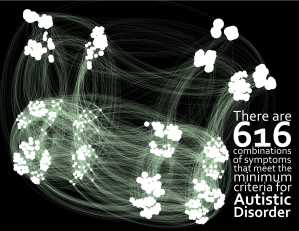Today, the Autism Science Foundation, a not-for-profit organization dedicated to funding autism research, announced the recipients of its annual pre- and postdoctoral fellowships, as well as the first recipient of a new 3-year early career award, and the recipient of its first treatment grant. Three postdoctoral and four predoctoral grants will be awarded to student/mentor teams conducting research in autism interventions, etiology, treatment targets, early diagnosis, biomarkers and animal models. Dr. Jill Locke of the University of Pennsylvania was named the recipient of ASF’s first multi-year grant, and Dr. Alex Kolevzon of the Icahn School of Medicine at Mount Sinai will receive ASF’s first treatment award.
“The autism community has demanded more research to understand what is causing autism and to develop better treatments,” said ASF President Alison Singer. “We are proud to be able to increase our research funding in response to this national health crisis and we are especially grateful to all our donors and volunteers who have come together to support autism research and make these grants possible.”
This year, the Autism Science Foundation will fund just over $350,000 in grants. In its four years of operation, ASF has funded over $1.1 million in grants.
“ASF attracts outstanding applicants across the board, representing a broad range of perspectives on autism science,” said Dr. Matthew State, Chair of the ASF Scientific Advisory Board and Chairman of the Psychiatry Department at the University of California, San Francisco. “These projects show great potential to move the field forward.”
The following projects were selected for 2013 funding:
3-Year Early Career Award:
* Dr. Jill Locke: University of Pennsylvania
Multi-Site, Randomized, Controlled Implementation Trial of an Evidence-Based, Adult and Peer-Mediated Social Skills Intervention for Elementary School Children with Autism Spectrum Disorder
Co-funded with the FAR Fund
Treatment Grant:
* Dr. Alexander Kolevzon: Icahn School of Medicine at Mount Sinai
Human Clinical Trial of IGF-1 in Children with Idiopathic ASD
Postdoctoral Fellowships:
* Dr. Aimee Badeaux & Dr. Yang Shi: Boston Children’s Hospital
Molecular Characterization of Autism Gene CHD8 in Shaping the Brain Epigenome
* Dr. Sara Schaafsma & Dr. Donald Pfaff: Rockefeller University
Sex-Specific Gene-Environment Interactions Underlying ASD
* Dr. Teresa Tavassoli & Dr. Joseph Buxbaum: Icahn School of Medicine at Mount Sinai
Developing a Sensory Reactivity Composite Score for the New DSM-5
Predoctoral Fellowships:
* Alexandra Bey & Dr. Yong-hui Jiang: Duke University
The Role of Shank3 in Neocortex Versus Striatum and the Pathophysiology of Autism
* Ezzat Hashemi & Dr. Veronica Martinez-Cerdeno: University of California, Davis
Alteration of Dendrite and Spine Number and Morphology in the Human Prefrontal Cortex in Autism
* Jessie Northrup & Dr. Jana Iverson: University of Pittsburgh
Development of Vocal Coordination between Caregivers and Infants at Risk for ASD
* Russell Port & Dr. Timothy Roberts: University of Pennsylvania
GABA and Gamma-Band Activity: Biomarker for ASD?
Learn more about the projects selected for funding here.



